Triallate
Synonym(s):S-(2,3,3-Trichloroallyl) N,N-diisopropylthiocarbamate
- CAS NO.:2303-17-5
- Empirical Formula: C10H16Cl3NOS
- Molecular Weight: 304.66
- MDL number: MFCD00078730
- EINECS: 218-962-7
- SAFETY DATA SHEET (SDS)
- Update Date: 2024-12-18 14:07:02
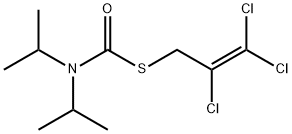
What is Triallate?
Chemical properties
Oily liquid. Practically insoluble in water; soluble in alcohol, acetone, ether, and heptane. Combustible.
The Uses of Triallate
Herbicide used to control wild oats in lentils, barley, peas and winter wheat.
The Uses of Triallate
Herbicide.
Definition
ChEBI: Tri-allate is a tertiary amine.
General Description
Colorless crystals or oily amber liquid. Toxic by inhalation, ingestion or skin absorption. Used as a pesticide.
Air & Water Reactions
Readily hydrolyzed by strong base or acid.
Reactivity Profile
TRIALLATE is an organochlorine carbamate derivative. Carbamates are chemically similar to, but more reactive than amides. Like amides they form polymers such as polyurethane resins. Carbamates are incompatible with strong acids and bases, and especially incompatible with strong reducing agents such as hydrides. Flammable gaseous hydrogen is produced by the combination of active metals or nitrides with carbamates. Strongly oxidizing acids, peroxides, and hydroperoxides are incompatible with carbamates.
Health Hazard
Highly toxic, may be fatal if inhaled, swallowed or absorbed through skin. Avoid any skin contact. Effects of contact or inhalation may be delayed. Fire may produce irritating, corrosive and/or toxic gases. Runoff from fire control or dilution water may be corrosive and/or toxic and cause pollution.
Fire Hazard
Non-combustible, substance itself does not burn but may decompose upon heating to produce corrosive and/or toxic fumes. Containers may explode when heated. Runoff may pollute waterways.
Agricultural Uses
Herbicide: Triallate is a pre-emergent or post-emergent herbicide used to control a variety of annual grasses and wild oats on several grains, oilseed and vegetable crops. Its use has been restricted to use in CO, ID, KS, MN, MT, NE, NV, ND, OR, SD, UT, WA, and WY. Its use on canary grass has been revoked. Not listed for use in EU countries . Registered for use in the U.S
Trade name
AVADEX BW®; BUCKLE®, (trial- late + trifluralin); CP-23426®; DIPTHAL®; FAR- GO®[C]; FAR-GO®; FORTRESS®; OVADEX BW®
Environmental Fate
Soil. In an agricultural soil, 14CO2 was the only biodegradation identified; however, bound residue and traces of benzene and water-soluble radioactivity were also detected in large amounts (Anderson and Domsch, 1980). In soil, triallate degrades via hydrolytic cleavage with the formation of dialkylamine, carbon dioxide and mercaptan moieties. The mercaptan compounds are further degraded to the corresponding alcohol (Hartley and Kidd, 1987). The reported half-life in soil is 100 days (Jury et al., 1987).
Properties of Triallate
| Melting point: | 29-30°C |
| Boiling point: | 117°C (0.3 mmHg) |
| Density | 1.273 |
| refractive index | 1.5320 (estimate) |
| Flash point: | 2 °C |
| storage temp. | APPROX 4°C
|
| solubility | Chloroform (Slightly), DMSO (Slightly), Ethyl Acetate (Slightly), Methanol (Slightly) |
| pka | -1.48±0.70(Predicted) |
| form | neat |
| Water Solubility | 4.0 g/mL |
| Merck | 13,9669 |
| BRN | 1875853 |
| CAS DataBase Reference | 2303-17-5(CAS DataBase Reference) |
| NIST Chemistry Reference | Triallate(2303-17-5) |
| EPA Substance Registry System | Triallate (2303-17-5) |
Safety information for Triallate
| Signal word | Warning |
| Pictogram(s) |
 Exclamation Mark Irritant GHS07  Health Hazard GHS08  Environment GHS09 |
| GHS Hazard Statements |
H302:Acute toxicity,oral H317:Sensitisation, Skin H373:Specific target organ toxicity, repeated exposure H410:Hazardous to the aquatic environment, long-term hazard |
| Precautionary Statement Codes |
P260:Do not breathe dust/fume/gas/mist/vapours/spray. P273:Avoid release to the environment. P280:Wear protective gloves/protective clothing/eye protection/face protection. P314:Get medical advice/attention if you feel unwell. P301+P312:IF SWALLOWED: call a POISON CENTER or doctor/physician IF you feel unwell. P302+P352:IF ON SKIN: wash with plenty of soap and water. |
Computed Descriptors for Triallate
New Products
4-Fluorophenylacetic acid 4-Methylphenylacetic acid N-Boc-D-alaninol N-BOC-D/L-ALANINOL Tert-butyl bis(2-chloroethyl)carbamate 3-Morpholino-1-(4-nitrophenyl)-5,6-dihydropyridin- 2(1H)-one Furan-2,5-Dicarboxylic Acid Tropic acid S-2-CHLORO PROPIONIC ACID ETHYL ISOCYANOACETATE 2-Bromo-1,3-Bis(Dimethylamino)Trimethinium Hexafluorophosphate (6-METHYL-[1,3]DITHIOLO[4,5-b]QUINOXALIN-2-ONE INDAZOLE-3-CARBOXYLIC ACID 4-IODO BENZOIC ACID (2-Hydroxyphenyl)acetonitrile 4-Bromopyrazole 5,6-Dimethoxyindanone 2-(Cyanocyclohexyl)acetic acid 4-methoxy-3,5-dinitropyridine 2-aminopropyl benzoate hydrochloride 1-(4-(aminomethyl)benzyl)urea hydrochloride diethyl 2-(2-((tertbutoxycarbonyl)amino) ethyl)malonate tert-butyl 4- (ureidomethyl)benzylcarbamate Ethyl-2-chloro((4-methoxyphenyl)hydrazono)acetateRelated products of tetrahydrofuran
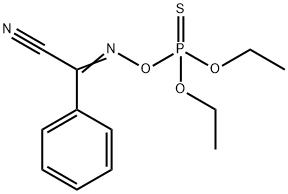
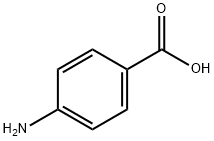
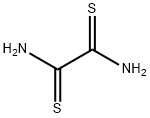
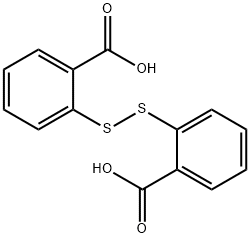



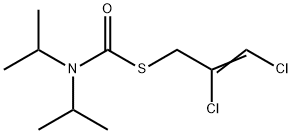
You may like
-
 Triallat CAS 2303-17-5View Details
Triallat CAS 2303-17-5View Details
2303-17-5 -
 2033-24-1 98%View Details
2033-24-1 98%View Details
2033-24-1 -
 1975-50-4 98%View Details
1975-50-4 98%View Details
1975-50-4 -
 2-HYDROXY BENZYL ALCOHOL 98%View Details
2-HYDROXY BENZYL ALCOHOL 98%View Details
90-01-7 -
 2-Chloro-1,3-Bis(Dimethylamino)Trimethinium Hexafluorophosphate 221615-75-4 98%View Details
2-Chloro-1,3-Bis(Dimethylamino)Trimethinium Hexafluorophosphate 221615-75-4 98%View Details
221615-75-4 -
 61397-56-6 CIS BROMO BENZOATE 98%View Details
61397-56-6 CIS BROMO BENZOATE 98%View Details
61397-56-6 -
 14714-50-2 (2-Hydroxyphenyl)acetonitrile 98+View Details
14714-50-2 (2-Hydroxyphenyl)acetonitrile 98+View Details
14714-50-2 -
 118753-70-1 98+View Details
118753-70-1 98+View Details
118753-70-1